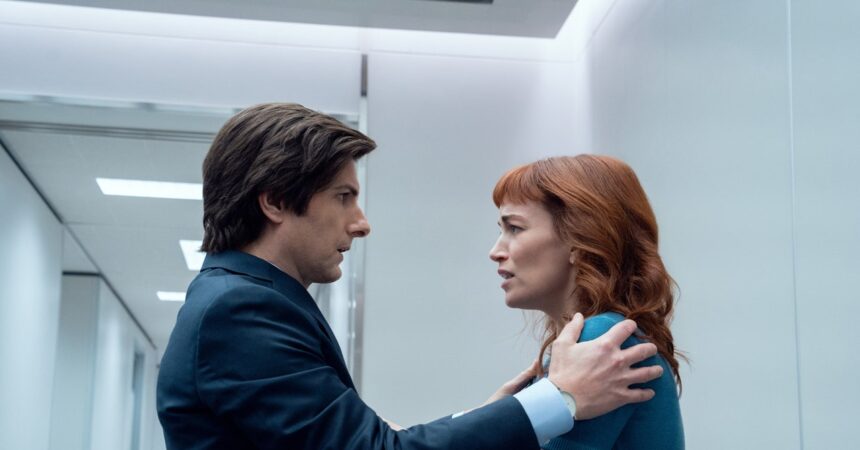THIS ITEM IS republished from The conversation under a Creative Commons License.
Breakupwhich imagines a world where a person’s work and personal life are surgically separated, returns Friday for its long-awaited second season. Although the concept of this gripping work of science fiction is far-fetched, it touches on a question that neuroscience has been trying to answer for decades: Can a person’s mind really be split in two?
It is remarkable that “split brain” patients existed since the 40s. To control the symptoms of epilepsy, these patients underwent surgery to separate the left and right hemispheres. Similar surgeries it still happens today.
Further research on this type of surgery showed that the separate hemispheres of split-brain patients could process information independently. This raises the uncomfortable possibility that the procedure creates two separate minds living in a single brain.
In the first season of BreakupHelly R (Britt Lower) experienced a conflict between her “innie” (the side of her mind that remembered her work life) and her “outie” (the side outside of work). In the same way, there is evidence of a conflict between the two hemispheres of real split-brain patients.
When you speak with split-brain patients, you are usually communicating with the left hemisphere of the brain, which controls speech. However, some patients can communicate from their right hemisphere by, for example, writing or arranging letters in Scrabble.
A young patient in a study He was asked what job he would like to do when he grows up. His left hemisphere chose an office job making technical drawings. His right hemisphere, however, arranged the letters to spell “racer.”
Split-brain patients also reported “alien hand syndrome“, where one of their hands is seen as moving of its own will. These observations suggest that two distinct conscious “persons” can coexist in the same brain and have conflicting goals.
In BreakupHowever, both the innie and the outie have access to speech. This is an indicator that the fictitious “separation procedure” must involve a more complex separation of brain networks.
An example of complex separation of functions was described in Neil’s case reportin 1994. Neil was a teenager who was experiencing many difficulties following a tumor in his pineal gland. One of these difficulties was a rare form of amnesia. This meant Neil couldn’t remember the events of his day or report what he learned at school. He had also become unable to read, although he could write, and he was unable to name objects, although he could draw them.
Surprisingly, Neil was able to continue his studies. The researchers were interested in how he was able to complete his homework when he had no memory of what he was learning. They asked him about a novel he was studying at school, Cider with Rosie by Laurie Lee. During the conversation, Neil didn’t remember anything about the book, not even the title. But when a researcher asked Neil to write down everything he remembered about the book, he wrote: “Bloodshot geranium window cider with Rosie Dranium, smelling like damp pepper.” [sic] and the growth of mushrooms” – all words related to the novel. Since Neil couldn’t read, he had to ask the researcher, “What did I write?”









